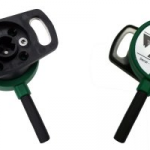Since the company’s formation in 1966, Bowers & Wilkins has grown to become recognised today as a world leader in acoustics. The comprehensive range of speaker products manufactured by the company are highly coveted for their ability to bring sounds to the listener, exactly as they were recorded in the studio.
It would be natural to think that the majority of the effort would be driven towards the design and manufacture of the cone “diaphragms” on the front of a speaker. However, at Bowers & Wilkins a significant amount of effort also goes into the manufacture of the speaker cabinet, which in some instances can represent the majority of the cost of the finished product. The company’s reputation for innovation in product design and performance is now matched by the introduction of innovative automated manufacturing processes, including a number of FANUC Robot Cells.
The acoustic excellence of Bowers & Wilkins speakers is matched by the leading edge design of the company’s products and the immaculate aesthetic finishes achieved. Maintaining these standards requires consistency in all areas of manufacture and especially in the operations used to finish the outer surfaces of the speaker.
Multi layered, laminated and formed speaker casings are processed initially using traditional CNC machines to produce speaker apertures and other features. The outer casings then have additional structural components added to produce a sub assembly before being presented to one of the three FANUC Robot finishing cells.
(Bowers & Wilkins have three FANUC Robot Cells – Used to Sand and Smooth the surfaces of speaker cabinets)
Each of the three cells is used to sand and smooth the surface of the speaker cabinets using the combination of a FANUC model M20iA/M20 Robot and interchangeable sanding heads.
Continued /
Continued /
The repeatability of the robot, coupled with feedback from the robot force sensor, ensures that consistent pressure is applied to the cabinet surface by the orbital sanding head at all stages of the process.
The automated tool changer fitted to the robot makes it possible for the robot to change the sanding heads as required, either during the process or at the end of the robot cycle. There are a total of six sanding heads within the cell, three on each side of the rotary table. The systems are also able to automatically change the sanding disks, using the robot to strip off the used disk and, using the robot’s force sensor, collect a new disk from a stack located within the cell.
(Sanding heads can be automatically change by the robot as required at different stages of the process)
Designed to deliver the highest levels of productivity, each cell has a two-position turntable unit, enabling the robot to work on one side, whilst on the other side, an operator removes a finished cabinet and re-loads the fixture with a new part to be processed. Light-Guards are used to protect the operator during the loading and unloading operations. This concept, together with the speed and repeatability of the robot, has delivered a significant reduction in processing time when compared to the original manual process. Products that may have taken around one hour to finish by hand can be processed by the robot in under ten minutes.
An intuitive HMI Unit is used to allow the operators to select one of seven different speaker models of varying dimensions, which can be handled by the system. The operator is also able to choose the finish for the particular product eg. wood, paint, paper etc. from the HMI panel. Once the robot has completed its cycle, and following inspection by the operator, any surface that may require additional processing can be selected individually to allow the robot to re-visit that area for re-work.
Another key feature is the fact that the robot program paths are taught off-line using FANUC’s Roboguide Software. This allows new programs to be developed for additional product types, or existing programs to be modified without interrupting production on the system. Bowers & Wilkins engineers can add their speaker CAD files (IGIS) to the Roboguide Cell and then use the “CAD to Path” utility to off-line program all of the robot paths. Once completed the programs can then be loaded to the robot.
Continued /
Continued /
The success of the current FANUC Robot finishing cells has triggered the purchase of a fourth system, currently under development at FANUC, which will be used for final polishing applications
The FANUC Robot Cells at Bowers & Wilkins combine the latest in automated manufacturing technology with a heritage built upon craftsmanship and acoustic excellence, to deliver the highest levels of finish and aesthetic quality.
For more information, please contact:
Marina KUTUMOVA
Business Development Assistant
FANUC UK Ltd
Seven Stars Industrial Estate
Quinn Close
Whitley
Coventry
CV3 4LB
Tel.: +44(0) 2476 053 075
E-Mail: [email protected]
Web: https://www.fanuc.eu






